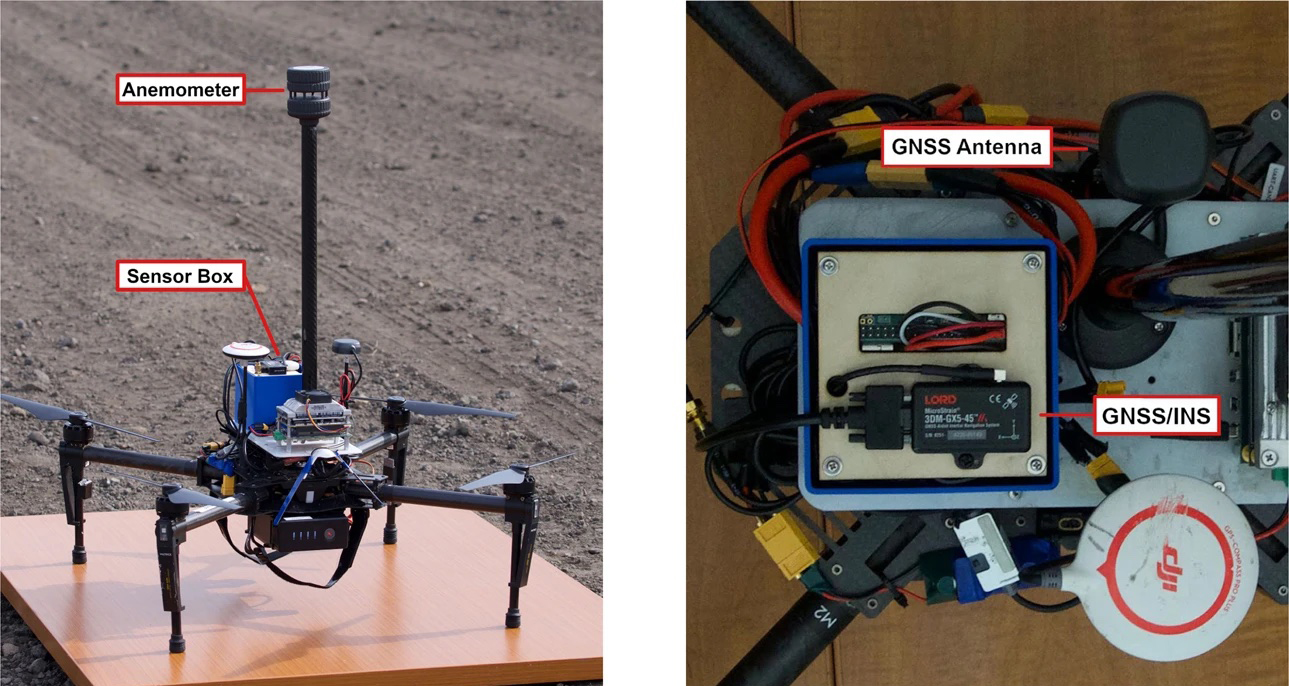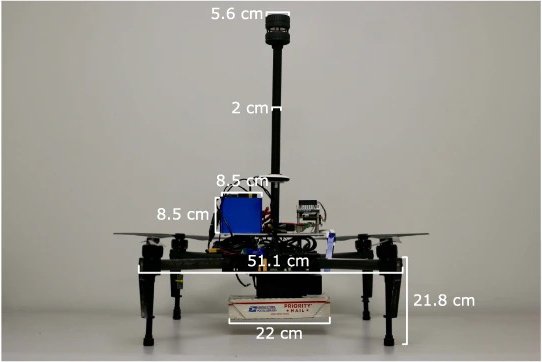
Drone Package Delivery Study Published by Scientific Data
PhD candidate Thiago Rodrigues and Professor Costa Samara recently published In-flight Positional and Energy Use Data Set of a DJI® Matrice 100 Quadcopter for Small Package Delivery in Scientific Data. The paper provides information on a dataset of 209 flight tests performed using DJI M100 quadcopter drone in the Pittsburgh region. The purpose of the experiment was to provide additional data to research and industrial communities that are working to improve UAV designs, safety, and energy efficiency.
 Rodrigues and Samaras believe that the study will advance the physical understanding of in-flight operations for package delivery drones. According to the researchers, the use of drones has increased dramatically in the past decade, and is set to improve the efficiency, speed, and access of last-mile package delivery. In addition to the drones’ ability to carry packages, the majority also have the capability to take off and land vertically, reducing their operational footprint and increase their delivery precision.
Rodrigues and Samaras believe that the study will advance the physical understanding of in-flight operations for package delivery drones. According to the researchers, the use of drones has increased dramatically in the past decade, and is set to improve the efficiency, speed, and access of last-mile package delivery. In addition to the drones’ ability to carry packages, the majority also have the capability to take off and land vertically, reducing their operational footprint and increase their delivery precision.
The testing was completed using an autonomously directed small quadcopter package delivery Uncrewed Aerial Vehicle (UAV). The drone vehicle was equipped with onboard GPS, IMU, voltage and current sensors as well as an ultrasonic anemometer to collect high-resolution data on the vehicle’s inertial states, wind speed, and power consumption.
During the testing, the drone was directed to take off, fly a specified route, and land in a varying set of operational parameters for a total flight time of 10 hours and 45 minutes—and 65 kilometers. The data collected was validated by comparing flights with similar operational parameters. Each test day was selected based on weather conditions—extremely harsh weather was avoided but care was taken to ensure that the data was not biased toward good weather.
 According to Rodrigues, this dataset may help researchers better understand regarding which factors most impact the drone’s energy consumption. The research also provides a well-documented data collection method that may be used by other researchers collecting UAV data as an experimental protocol. Rodrigues adds that the project was a valuable collaboration that will help him as he moves into the field after earning his PhD.
According to Rodrigues, this dataset may help researchers better understand regarding which factors most impact the drone’s energy consumption. The research also provides a well-documented data collection method that may be used by other researchers collecting UAV data as an experimental protocol. Rodrigues adds that the project was a valuable collaboration that will help him as he moves into the field after earning his PhD.
“Being part of such a robust project, with more than 200 tests, helped me to learn a lot about experimental design, data management, and data analysis.”
 This story demonstrates CMU's work toward attaining Sustainable Development Goal 9 of the 17 Global Goals to create a more equitable and viable planet by 2030.
This story demonstrates CMU's work toward attaining Sustainable Development Goal 9 of the 17 Global Goals to create a more equitable and viable planet by 2030.